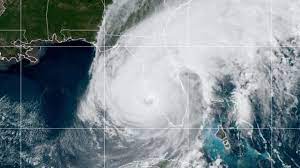Tips for Midwesterners caught in a Hurricane

One of my family friends recently moved to Orlando, Florida after retirement. He lived in a midwestern state and never experienced a hurricane in his entire life. Let’s just say, Hurricane Ian was an extremely interesting experience for him. However, he has come out on the other side with one hurricane under his belt and information ready to share. Our source has asked to stay anonymous but agreed to provide a few tips for any Midwesterners looking to move to a state prone to hurricanes.
Tip One: Have a Hurricane Plan
He suggests pretending like it’s first grade and you’re making a fire escape plan. Make sure you know where you will flee to if necessary. Also, you should know that with impending hurricanes traveling will be challenging. He chose to stay through the hurricane. “If you [have] the opportunity to flee in the beginning, just take it.” If you don’t, make sure you have a plan!
Tip Two: Install Storm Shutters on Your Home
According to our source, storm shutters truly helped him get through the hurricane. He recommends them because they protect your windows. In an emergent situation, he nailed plywood over his larger dining room window and said that worked fine as well.
Tip Three: Store Important Documents in a Safe and Secure Spot
He recommends getting a secure safe to keep your important documents in. For example, you should prioritize keeping your birth certificates, marriage licenses, financial papers, and insurance policy information, as well as valuables such as jewelry safe during these events. This source also keeps a digital copy of each file in case something was to go drastically wrong.
Tip Four: Have an Emergency Supply Room
Since he decided to stay put during Hurricane Ian, he had food reserved in a specific room. He had an emergency food supply, emergency medicine supply, emergency power sources, and even a fire extinguisher. Having a designated, stocked-up room helped him through the hurricane and its aftermath.
Tip Five: Understand the difference between a “Watch” and a “Warning”
Moving to Florida posed many new learning opportunities. While he understood a Thunderstorm Watch versus a Warning, having to remember how quickly things can turn was new. A watch means there may be hurricane-like activity while a warning means there will be a hurricane, but the severity is to be determined. A watch is ordered about 48 hours before a tropical storm begins or may begin, typically winds reach 74 miles an hour during a watch. A warning is issued 36 hours before a tropical storm, typically these winds can break 100 miles per hour.
Hopefully, these tips help any Midwesterners with their retirement decisions. These tips definitely confirmed that Florida and I will not get along.







